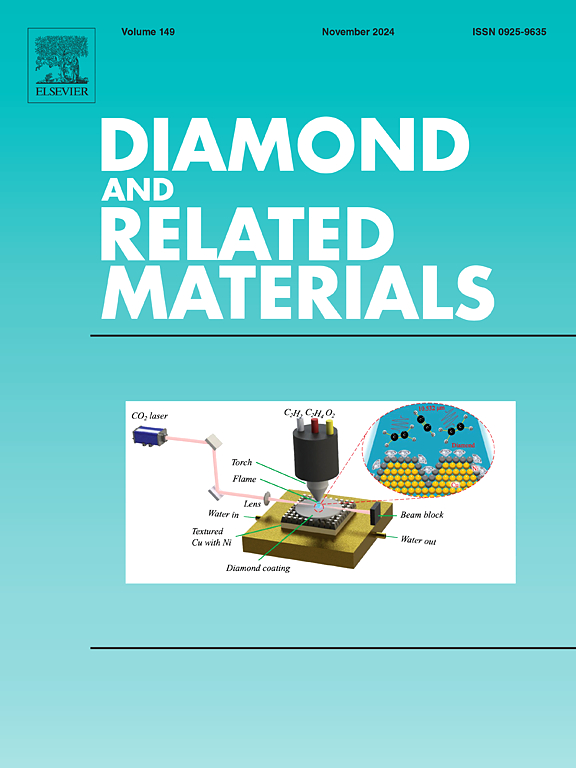石墨阳极极化过程中石墨烯自组装成富勒烯和空心球形石墨烯颗粒
IF 4.3
3区 材料科学
Q2 MATERIALS SCIENCE, COATINGS & FILMS
引用次数: 0
摘要
本研究报道了石墨烯在乙醇-水-氢氧化钠电解质中通过阳极极化获得的自组装成富勒烯和空心球形石墨烯颗粒。MALDI质谱和紫外-可见光谱证实,纯化和离心后出现较小的富勒烯(C55、C60)和较大的物种,其AMU高达1951 Da(相当于C160)。扫描电镜(SEM)和原子力显微镜(AFM)发现了空心球形颗粒的存在,而HRTEM则发现了小富勒烯和大富勒烯的团聚体。在合成过程中,羟基自由基(●OH)和氢氧根离子(OH−)作为共反应物,劈裂石墨,从而产生富勒烯基结构。这种室温电化学方法提供了可扩展的、自下而上的新型碳基纳米材料和有机化合物的合成。本文章由计算机程序翻译,如有差异,请以英文原文为准。

Self-assembly graphene into fullerenes and hollow spherical graphene particles during anodic polarization of graphite
This study reports the self-assembly of graphene, obtained by anodic polarization of graphite in an ethanol-water-NaOH electrolyte, into fullerenes and hollow spherical graphene particles. MALDI mass spectrometry and UV–Vis spectroscopy confirmed that smaller fullerenes (C55, C60) and larger species with AMU up to 1951 Da (equivalent to C160) emerged after purification and centrifugation. SEM and AFM revealed the presence of hollow spherical particles, while HRTEM identified agglomerates of both small and giant fullerenes. During the synthesis, hydroxyl radicals (●OH) and hydroxide ions (OH−) acted as co-reactants and cleaved graphite with consequent production of fullerene-based structures. This room-temperature electrochemical approach offers scalable, bottom-up synthesis of novel carbon-based nanomaterials as well as organic compounds.
求助全文
通过发布文献求助,成功后即可免费获取论文全文。
去求助
来源期刊

Diamond and Related Materials
工程技术-材料科学:综合
CiteScore
6.00
自引率
14.60%
发文量
702
审稿时长
2.1 months
期刊介绍:
DRM is a leading international journal that publishes new fundamental and applied research on all forms of diamond, the integration of diamond with other advanced materials and development of technologies exploiting diamond. The synthesis, characterization and processing of single crystal diamond, polycrystalline films, nanodiamond powders and heterostructures with other advanced materials are encouraged topics for technical and review articles. In addition to diamond, the journal publishes manuscripts on the synthesis, characterization and application of other related materials including diamond-like carbons, carbon nanotubes, graphene, and boron and carbon nitrides. Articles are sought on the chemical functionalization of diamond and related materials as well as their use in electrochemistry, energy storage and conversion, chemical and biological sensing, imaging, thermal management, photonic and quantum applications, electron emission and electronic devices.
The International Conference on Diamond and Carbon Materials has evolved into the largest and most well attended forum in the field of diamond, providing a forum to showcase the latest results in the science and technology of diamond and other carbon materials such as carbon nanotubes, graphene, and diamond-like carbon. Run annually in association with Diamond and Related Materials the conference provides junior and established researchers the opportunity to exchange the latest results ranging from fundamental physical and chemical concepts to applied research focusing on the next generation carbon-based devices.
 求助内容:
求助内容: 应助结果提醒方式:
应助结果提醒方式:


